Fishing is a popular pastime enjoyed by people all over the world. However, fishing in strong winds can be a difficult and frustrating experience. So if you’re having trouble catching fish due to windy conditions, don’t worry.
How much wind is too much for fishing? We’ve got some tips for you that will help you deal with windy weather and still enjoy a successful day of fishing. Keep reading to learn more.
Is It Dangerous to Go Fishing When the Wind Is Too Strong?
In a word, yes. Too much wind can make fishing difficult in several ways. It can be hard to cast your line accurately in strong winds, and the wind can also cause your bait or lure to move around too much, making it difficult for fish to take a bite.
In addition, high winds can create choppy water, making it difficult to see fish below the surface.
What Can You Do to Improve Your Chances of Fishing in Strong Winds?
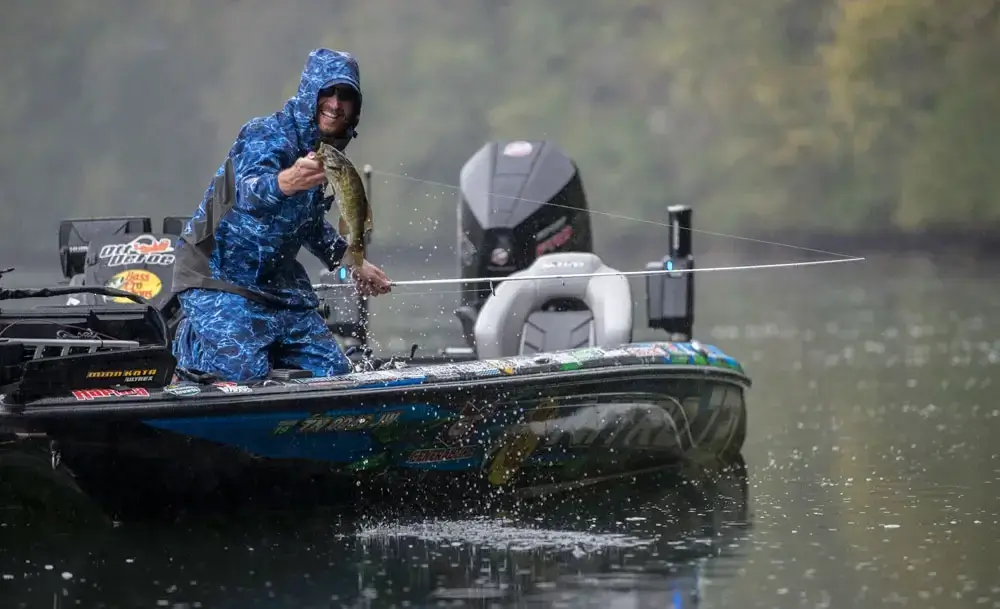
There are a few things that you can do to increase your chances of success when fishing in windy conditions:
- Use heavier lines. A heavier line is less likely to be blown around by the wind, so it will be easier to cast.
- Use heavier rigs and bait. Heavier rigs and baits are less likely to move around too much due to strong winds, making them more appealing to fish that may otherwise ignore a lighter lure or bait.
- Fish in areas with cover from trees or buildings where possible as this will help to break up the wind and make it easier for you to spot fish.
- Fish early in the morning or late in the day when the winds are typically lighter.
- Stay patient and keep trying. Even if conditions aren’t ideal, don’t give up – with a little luck, you may still be able to catch a few fish.
Windy days can be a challenge for fishermen, but you can still enjoy a successful day on the water with a little bit of preparation.
Use heavier lines and rigs, fish in areas with cover, and stay patient – before you know it, those strong winds won’t stand a chance against you.
Tips for Dealing with Strong Winds
Wind can be a fisherman’s best friend or worst enemy. When it’s howling, it can make fishing difficult, if not impossible. But with a little knowledge and preparation, you can still enjoy your day on the water despite strong winds.
Here are some tips for dealing with strong winds:
– Take advantage of windy weather to catch fish that are feeding. Fish often feed on baitfish, crawfish, and other creatures when choppy water.
If you see whitecaps in a particular area, chances are something is happening underneath them.
– Look for areas where the wind is blowing into shore or a bay. Fish will often congregate in these areas, where the strongest current and wave action.
– Use heavier lures and lines when fishing in windy conditions. Heavier tackle can help you keep your lure in the strike zone longer.
– Stay alert for changes in the weather. A sudden change in wind direction can also mean a change in the fishing conditions.
– Wear clothing that will keep you warm and dry. A good rain jacket is essential when fishing in windy weather.
– Take shelter if the weather turns bad. Don’t try to fish through a thunderstorm or high winds – it’s not worth the risk.
– Be patient. Fishing in windy conditions takes a little more effort, but it can be rewarding. Just relax and enjoy the challenge.
How Much Wind is Too Much for Fishing
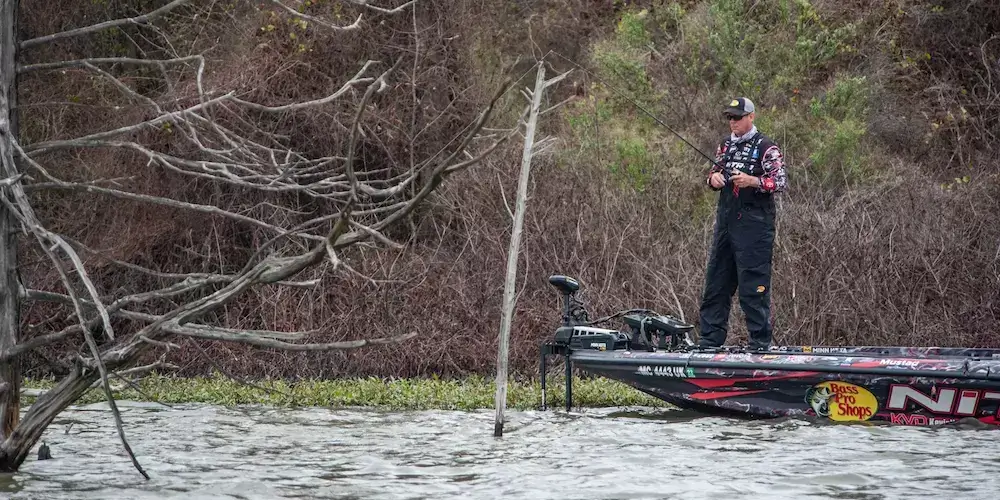
Strong winds can make it difficult to fish, but how much wind is too much?
- Wind speed: how fast the wind blows, measured in miles per hour. A light breeze will blow between six and ten mph while a tropical storm has sustained wind speeds of over 70 mph.
- Wind direction: how the wind is blowing in relation to you. A wind that’s coming from your right side is called a “right crosswind” and will push your boat or angler off course.
- Wave height: The height of waves, measured in feet. The taller the waves, the more difficult it will be to stay on course and fight fish.
Wind speed can also impact how well you fish. If it’s blowing too hard, your bait may not be able to reach the bottom of the water column, where most species prefer hiding out during strong currents or inclement weather conditions like thunderstorms (which typically bring heavy winds).
So how do we know how much wind is too much for fishing? We can find out by looking at our local weather report. If it says “20 mph,” then there’s probably enough wind to make things difficult but not so strong that we need to worry about canceling our fishing trip.
Some anglers prefer to fish in these conditions because the gusts can create visual interest in the water and make it more challenging to catch a fish.
More than 20 mph wind is considered too much for fishing, and anything over 30 mph is too dangerous to be on the water. So if you’re ever in doubt, it’s always best to cancel your trip and wait for calmer conditions.
However, if you’re new to fishing or don’t have much experience dealing with windy conditions, it’s best to start by fishing in calmer weather and work your way up to more challenging conditions.
Wave height is another important factor to consider when fishing in strong winds. The taller the waves, the more difficult staying on course and fighting fish will be.
If you’re angling from a boat, make sure you have a sturdy anchor that can hold your vessel in place even against large waves. If you’re fishing from shore, find a spot that offers protection from the wind.
It may be best to wait out the storm and come back another day in some cases. However, fishing in high winds can be frustrating and dangerous, so it’s important to be smart about approaching these conditions.
What Is the Most Suitable Weather for Fishing?
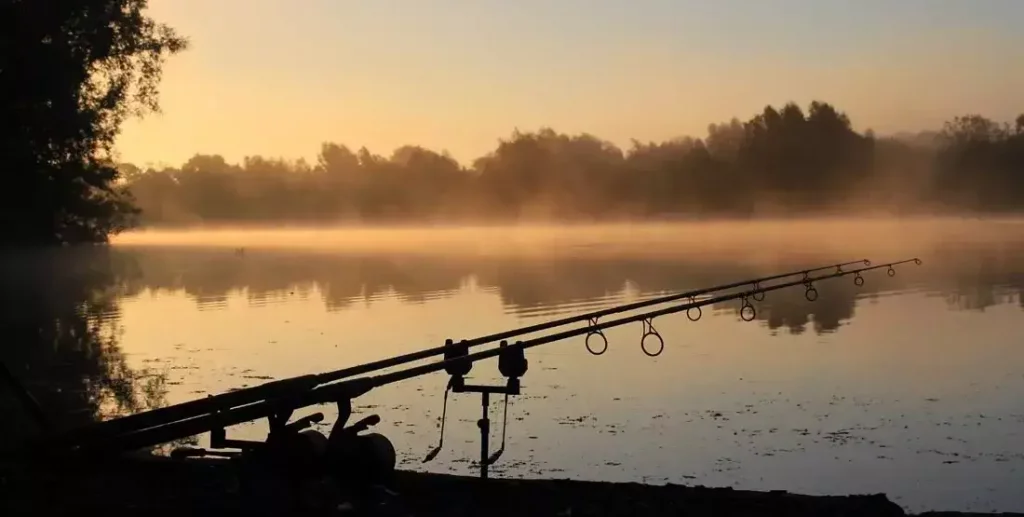
The best weather for fishing is the days that aren’t too hot, not too cold, and have little to no wind. However, some people enjoy how challenging it is when even the slightest breeze blows.
I used to be that type of person until I realized how hard it was to concentrate on my rod and line when the wind was howling.
If there is too much wind, it can be difficult to make any casts and even more frustrating when your line keeps getting tangled around trees or bushes.
Not only is it hard to fish in these conditions, but you are also fighting against the weather, which makes it an unfair battle.
Is it possible to catch fish in offshore winds?
Offshore winds are a mixed bag for fishing. They can create difficult conditions, but they can also produce some of the best fishing you’ll ever experience.
The most important thing to remember when fishing in offshore winds is to use heavier tackles than normal. This will help you battle the fish and keep them on the line in these tough conditions.
Is it possible to catch fish from an onshore wind?
Onshore wind is good for fishing. It brings warmer water in, which attracts bait and predator fish. But how does an onshore wind work?
Onshore winds are the opposite of offshore winds, where they blow from land out to sea instead of from sea onto land. This is why it’s not as bad if you’re fishing from the shoreline.
How Much Wind Is Too Much For Kayak Fishing?
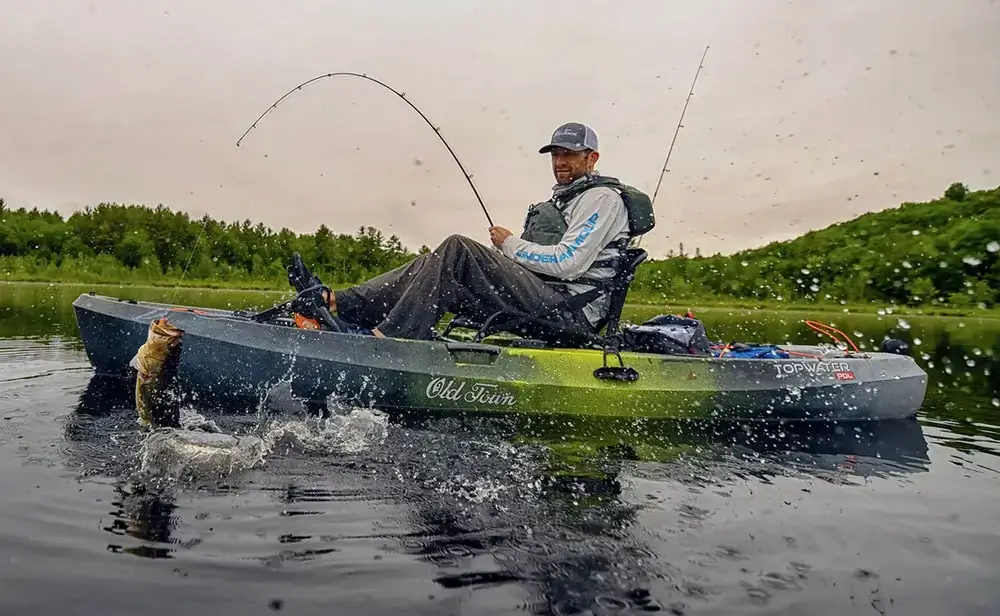
Whether you’re fishing inshore or offshore, there are three important factors to consider when determining how much wind is too much for kayak fishing: how experienced you are with your vessel, how experienced you are in the water, and how well prepared you have been.
The first two will determine how safe it is to fish in high winds, while the last will determine how productive your fishing experience will be.
Ideal kayak fishing conditions are any wind speed below ten miles per hour. Anything higher than ten mph might be difficult, and anything above fourteen or fifteen miles per hour can become dangerous quite rapidly.
If you are an experienced kayaker and fisherman, you may be more comfortable fishing in high winds than someone new to kayak fishing.
What Is the Wind’s Effect on Kayak Fishing?
Wind can be dangerous for kayak fishing in a few ways. First, wind can cause choppy water conditions that make it difficult to paddle and fish.
Second, the wind can blow you or your kayak off course, which can be dangerous if you are far from shore. Finally, strong winds can create rough waves that are difficult to navigate and can even cause your kayak to capsize.
You should never go out on the water if you sustain winds over 20 miles per hour. However, suppose you find yourself caught in a storm while fishing, stay calm, and try to get back to shore as soon as possible.
You should also be aware of how windy conditions can affect your fishing. In general, you will want to fish in the morning or evening when the winds are calmer.
If you decide to fish during windy conditions, use a heavier lure and reel to help keep your line from blowing around.
Be sure to consider the wind speed and direction when planning your fishing trip; this will help avoid dangerous waters and choose the best spots for catching fish.
How to Paddle a Kayak When It’s Windy
When fishing in windy conditions, it’s important to take precautions to make sure you stay safe and can still enjoy your day on the water. Here are a few tips for how to paddle a kayak when it’s windy:
- Try to find sheltered areas where there is less wind. This might mean fishing in different spots than you normally would.
- If you’re fishing in an open area, try to position yourself so the wind is at your back. This will help you paddle more easily.
- Keep a close eye on the weather forecast and plan your fishing trip accordingly. If you know there’s going to be a lot of wind, it might be best to wait until another day.
- Wear a life jacket. Even if you’re an experienced kayaker, it’s always important to wear a life jacket in case of emergency.
- Take your time paddling. Paddling slowly will help you stay in control and prevent you from getting blown away by the wind.
By following these tips, you can still enjoy fishing in windy conditions. Just stay safe and use common sense while out on the water.
What Should I Do If The Wind Dies While I’m On The Boat?
Most fishing trips will be completed with light winds. However, some of the best days are during a front when many anglers are staying home.
If you prepare for strong winds and rough water, you can still enjoy your trip to the lake and hopefully catch some nice fish in the process.
When wind speeds reach 15 mph, anglers need to start considering the adverse effects of wind on their fishing trip.
Wind Direction
The most important thing an angler can do when fishing in high winds is to pay attention to the direction of the wind. Fish will stack up along current breaks and structure according to the direction of the wind.
If you can position yourself in the same direction as the fish, you will have a much better chance of catching them.
Wind Speed
In general, the faster the wind blows, the more difficult it to fish. The waves become choppier, and it becomes harder to keep your boat pointed in the right direction.
Fish also become spookier and harder to catch as the wind picks up. In winds over 15 mph, it is also very difficult to spot fish along shallow flats and shorelines due to the whitewater caused by high waves.
Fishing Strategies For Strong Winds
When fishing in strong winds, we like to slow down our presentations and try different techniques than normal.
We often use a jighead with a plastic lizard or crawfish in these conditions. These soft plastics are weedless and can be fished without hanging up on a heavy cover.
Another technique that can be productive in high winds is to fish a deep-diving crankbait along the outside edge of drop-offs and riprap banks.
The crankbait will quickly dive to the desired depth and hold there, allowing you to slow down your retrieve.
Other Risks that May Be exacerbated by Wind
Strong winds can also cause other accidents to happen when you are fishing. For example, the wind may blow your boat into another boat, a dock, or a buoy.
The high waves caused by strong winds can make it more difficult for you to control your vessel and avoid obstacles in the water.
In addition, if you’re fishing in open water, the wind can quickly carry your bait away, making it difficult to catch a fish.
On Windy Days, Where Do Fish Go?
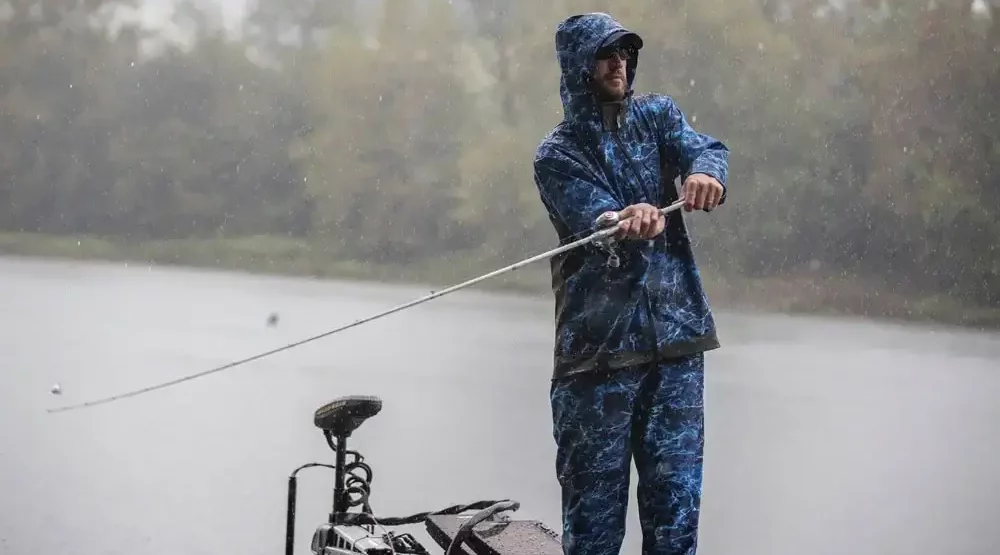
The best advice I can give you is to start looking for the water that isn’t moving. The majority of fish will be suspended in the current, and this means that if there’s a strong wind blowing across your favorite fishing spot, you’ll have to find some slack water or get out on another lake if possible.
If you’re forced to fish in windy conditions, there are a few things you can do to increase your chances of success.
First and foremost, use heavier line weights. A stiff breeze will make it difficult for light lines to penetrate the water’s surface, so go ahead and bump up to something with more weight.
You’ll also want to use a larger weight on your hook, as the wind will blow your bait around more quickly and easily than it would in calm conditions.
The second thing you can do to beat those strong winds is get out of them. If there’s a stiff breeze blowing across your favorite fishing spot, find some slack water or get out on another lake if possible.
This is especially important if you’re using a light line, as the wind will quickly wear you out and decrease your chances of landing a fish.
Finally, make sure to use bait that can stand up to the wind. Baitfish like minnows and shad will work well in most cases, but if the wind is blowing, you might want to try something a little harder like a jig or spinnerbait.
Fish will still be biting on windy days; you have to adjust your tactics a bit.
Use heavier line and tackle, get out of the wind if possible, and use bait to stand up to the conditions. With a little bit of effort, you’ll be able to catch fish in even the windiest conditions.
Is There a Lot of Wind on the Ocean at 15 Mph?
The answer to this question is subjective. Some anglers may feel that 15 mph wind is too strong, while others may not mind fishing in those conditions. Ultimately, it depends on the individual and the most comfortable with.
That being said, there are a few things to keep in mind when fishing in windy conditions. For one, the stronger the wind, the more difficult it will be to cast your line.
This can lead to frustration and wasted time on the water. In addition, strong winds can make it difficult to maintain control of your boat, which could cause an accident if not careful.
The best way to determine whether or not you can handle fishing in 15 mph winds is by trying it out for yourself. If the windy conditions aren’t bothersome, keep going and enjoy your day on the water.
However, it may be best to head back in if they are too much of a hassle (or even dangerous).
No matter what, always use caution when fishing in windy conditions, and remember to stay safe.
How Do You Bank Fish in Windy Conditions?
It can be difficult to keep your bait in the strike zone when there is a lot of wind. One way to combat this is by using a heavier weight.
This will help keep your bait in place and allow you to cast farther. You may also want to try fishing in areas sheltered from the wind or use a drift sock to help you control your bait.
If the wind is too strong, it cannot be easy to maintain your balance while fishing. In these cases, it may be best to wait for a calmer day or try another type of fishing.
Strong winds can also make it difficult to spot fish and cause choppy water tricky baiting.
Bank fishing in windy conditions:
- Use a heavier weight to keep a bait in place
- Fish in sheltered areas that are protected from the wind
- Use a drift sock to help control your bait
If the wind is too strong, it may be best to wait for calmer days. Strong winds can also make it difficult to spot fish and cause choppy water tricky baiting.
Final Thought
Although wind can be a nuisance when fishing, it’s important to remember that it also plays an important role in the overall health of our fisheries.
So don’t let a little wind keep you from enjoying a day on the water. Just use these tips to help you deal with strong winds, and you’ll be good to go.

